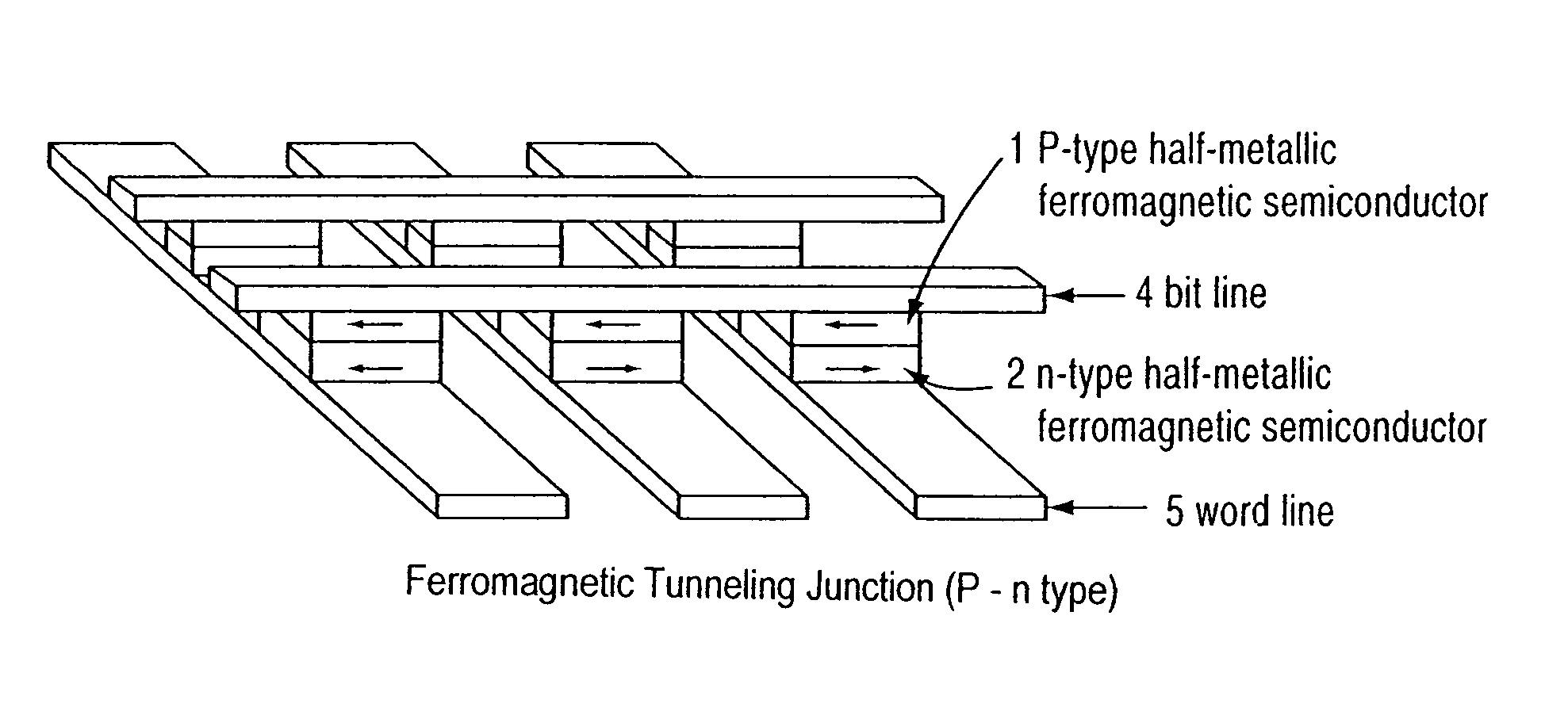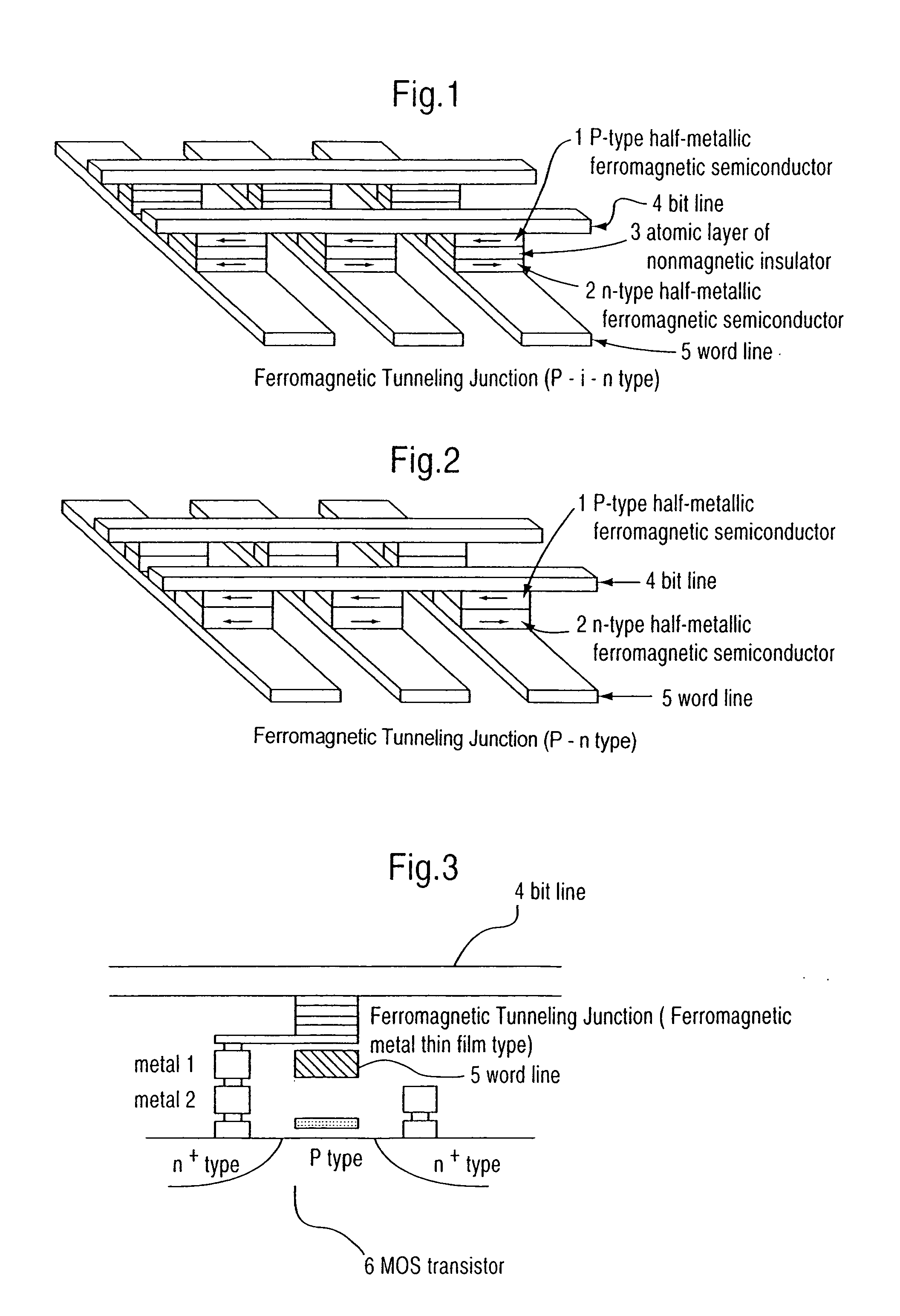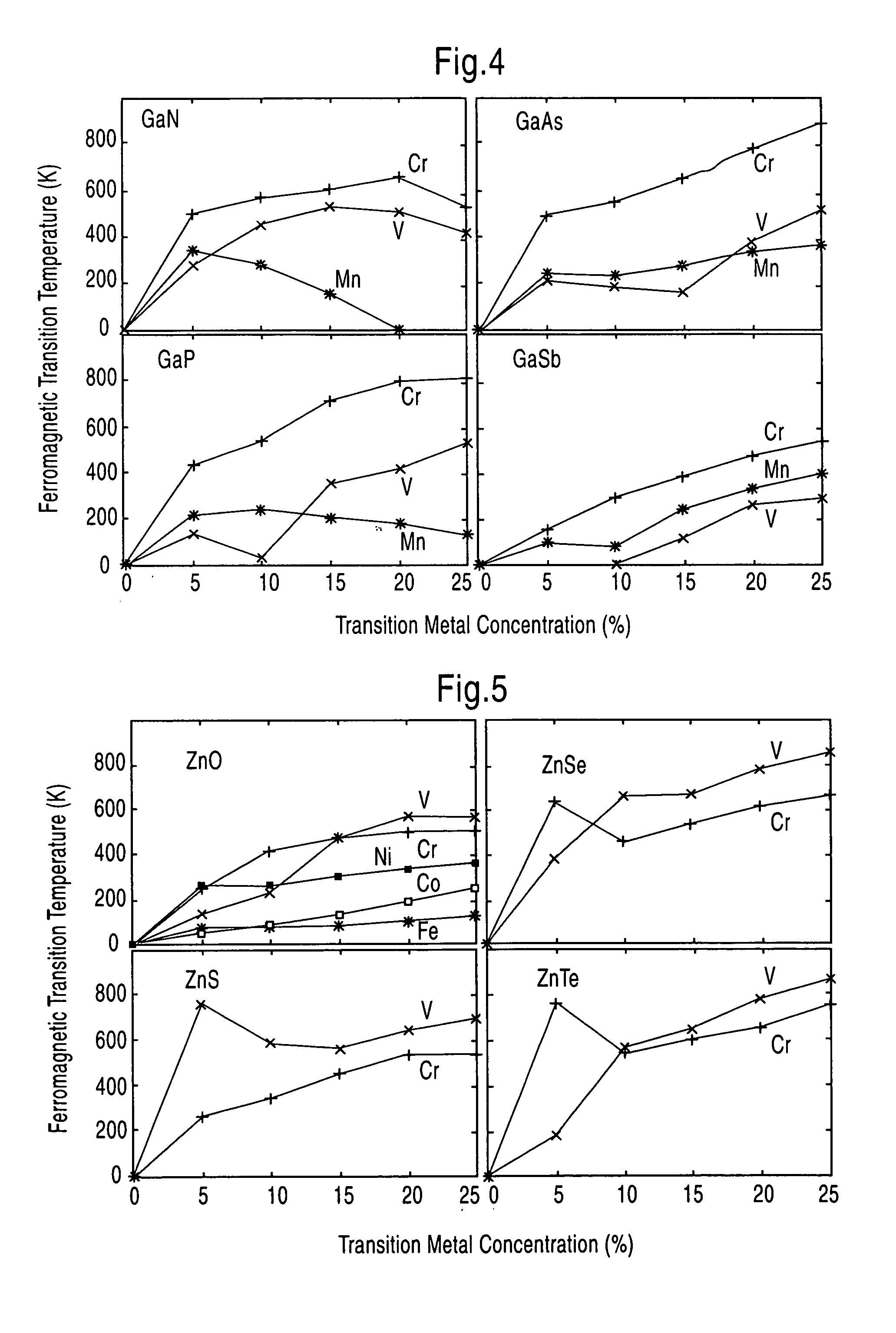Magnetoresistive random-access memory device
a random access and memory device technology, applied in the direction of instruments, spin-exchange-coupled multilayers, substrate/intermediate layers, etc., can solve the problems of increased cost and chip size, gmr memory is used, and difficult reading operation, so as to improve the heat resistance of the tmr element, improve the mr ratio, and high-integrated mram
- Summary
- Abstract
- Description
- Claims
- Application Information
AI Technical Summary
Benefits of technology
Problems solved by technology
Method used
Image
Examples
example
Example 1
[0076]—Preparation of MRAM Using n-type (Ga, Cr) N and p-type (Ga, Mn) N Half-Metallic Dilute Ferromagnetic Semiconductors—
[0077]In order to reduce the resistance of a TMR element, a p-i-n type low-resistance tunneling-magnetoresistance-effect (low-resistance TMR) diode was prepared using p-type (Ga, Mn) N (the concentration of Mn: 10 atomic %) as a p-type half-metallic dilute ferromagnetic semiconductor, n-type (Ga, Cr) N (the concentration of Cr: 10 atomic %) as an n-type half-metallic dilute ferromagnetic semiconductor, and two atomic layers of nonmagnetic insulator GaN (i-layers) interposed therebetween, as shown in FIG. 1.
[0078]It was verified that the new type of TMR element exhibits a rectification effect of allowing a rectified current to flow in only one direction in response to applying a low voltage of 5 to 20 meV to bit and word lines. This means that a new type of magnetoresistive random-access memory (MRAM) using p-type and n-type half-metallic dilute ferromag...
example 2
[0082]—Preparation of MRAM Using n-Type (Zn, V) O and p-Type (Zn, Cr) O Half-Metallic Dilute Ferromagnetic Semiconductors—
[0083]In order to reduce the resistance of a TMR element, a p-i-n type low-resistance tunneling-magnetoresistance-effect (low-resistance TMR) diode was prepared using p-type (Zn, Cr) O (the concentration of Cr: 10 atomic %) as a p-type half-metallic dilute ferromagnetic semiconductor, n-type (Zn, V) O (the concentration of V: 10 atomic %) as an n-type half-metallic dilute ferromagnetic semiconductor, and three atomic layers of nonmagnetic insulator ZnO (i-layers) interposed therebetween, as shown in FIG. 1.
[0084]It was verified that the new type of TMR element exhibits a rectification effect of allowing a rectified current to flow in only one direction in response to applying a low voltage of 8 to 25 meV to bit and word lines. This means that a new type of magnetoresistive random-access memory (MRAM) using p-type and n-type half-metallic dilute ferromagnetic semi...
PUM
| Property | Measurement | Unit |
|---|---|---|
| temperature | aaaaa | aaaaa |
| temperature | aaaaa | aaaaa |
| temperature | aaaaa | aaaaa |
Abstract
Description
Claims
Application Information
 Login to View More
Login to View More - R&D
- Intellectual Property
- Life Sciences
- Materials
- Tech Scout
- Unparalleled Data Quality
- Higher Quality Content
- 60% Fewer Hallucinations
Browse by: Latest US Patents, China's latest patents, Technical Efficacy Thesaurus, Application Domain, Technology Topic, Popular Technical Reports.
© 2025 PatSnap. All rights reserved.Legal|Privacy policy|Modern Slavery Act Transparency Statement|Sitemap|About US| Contact US: help@patsnap.com



